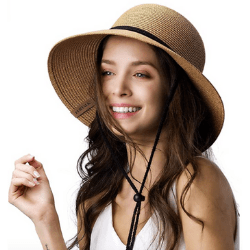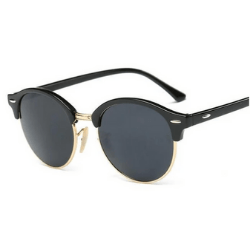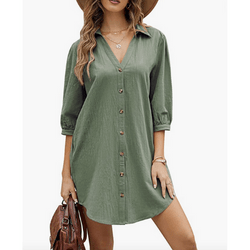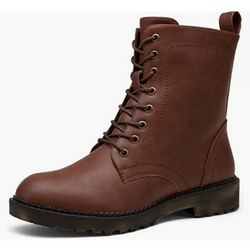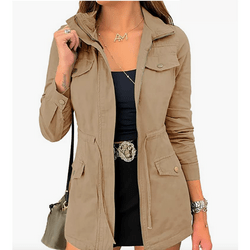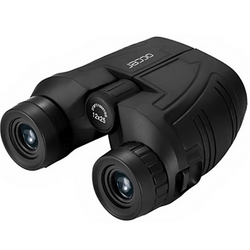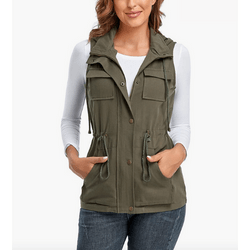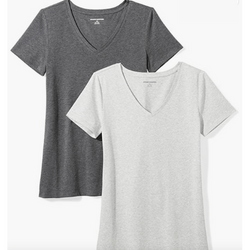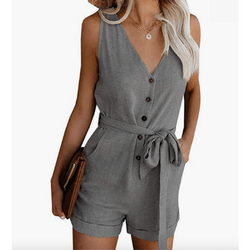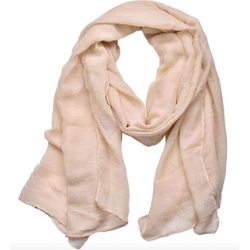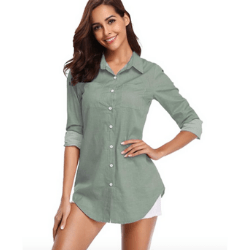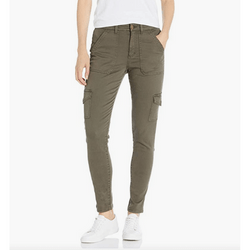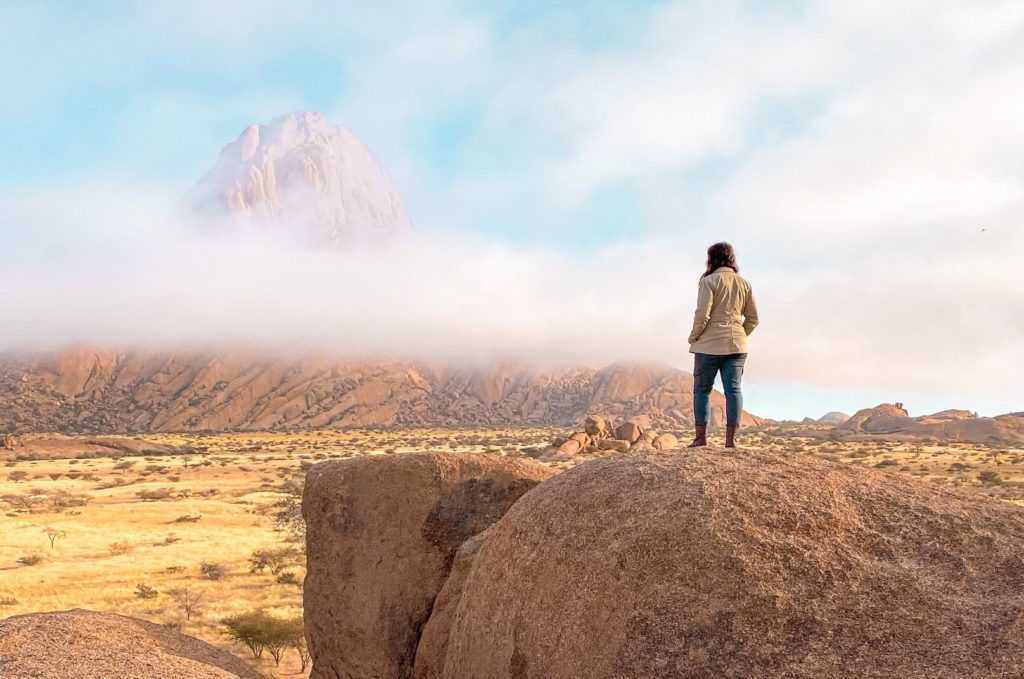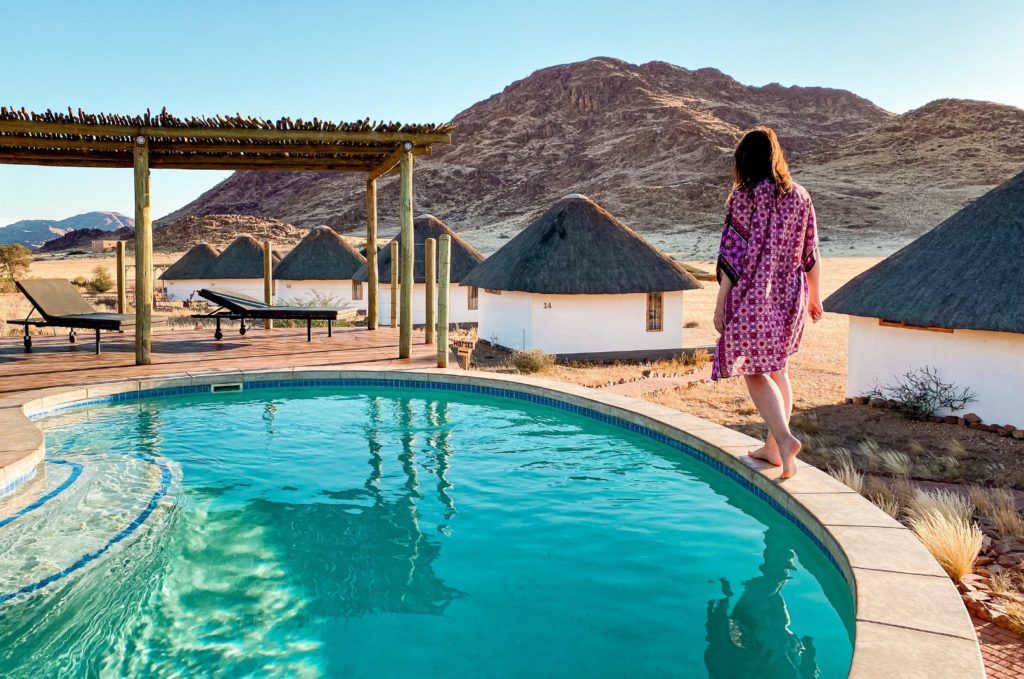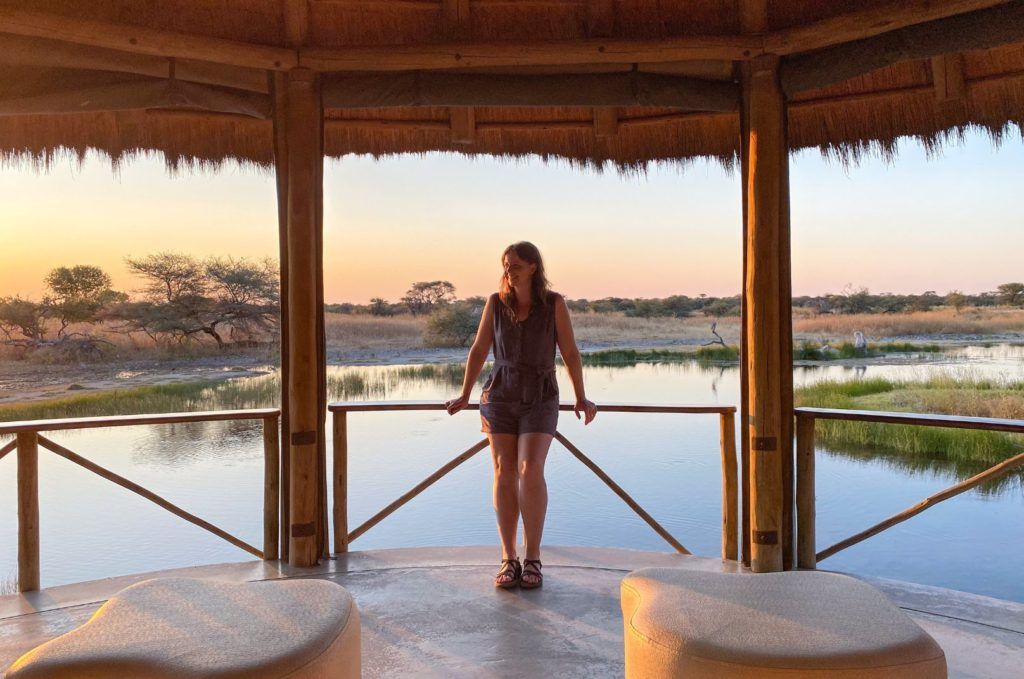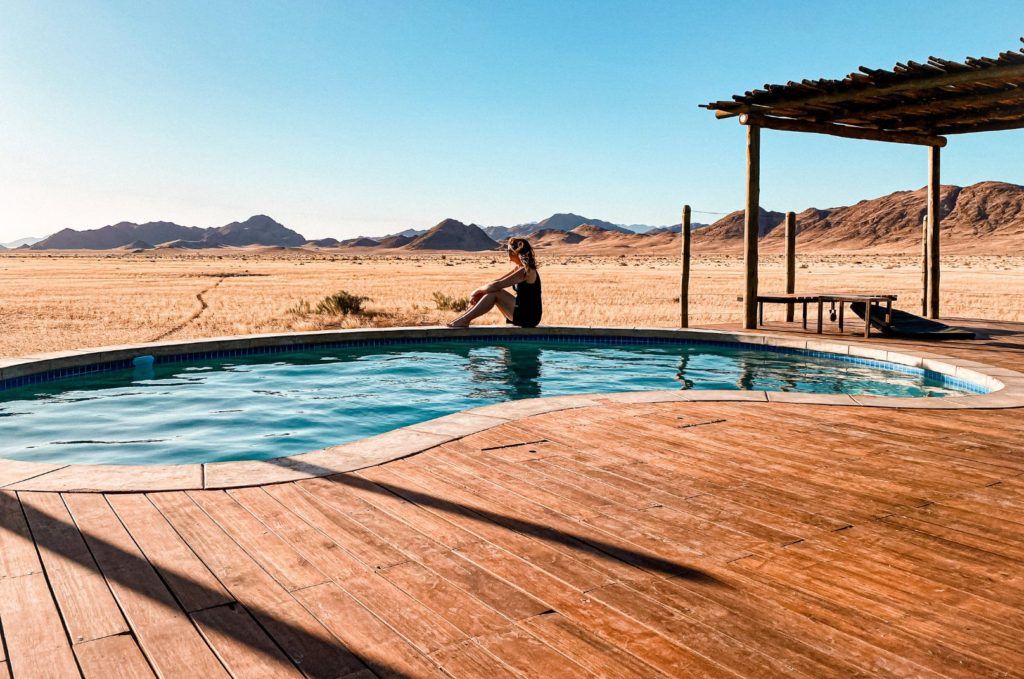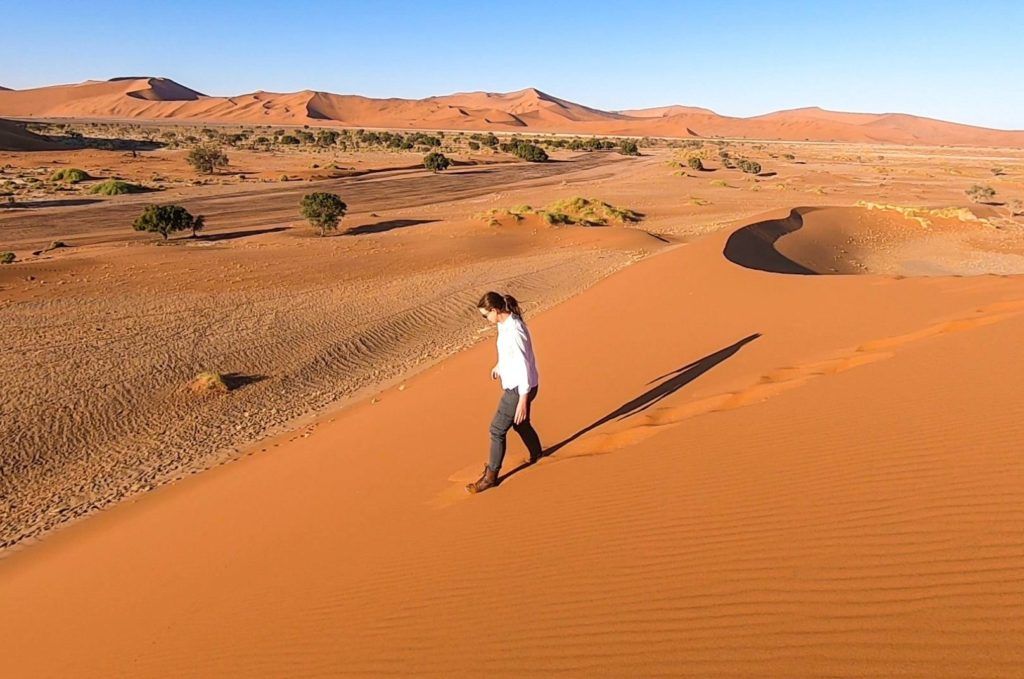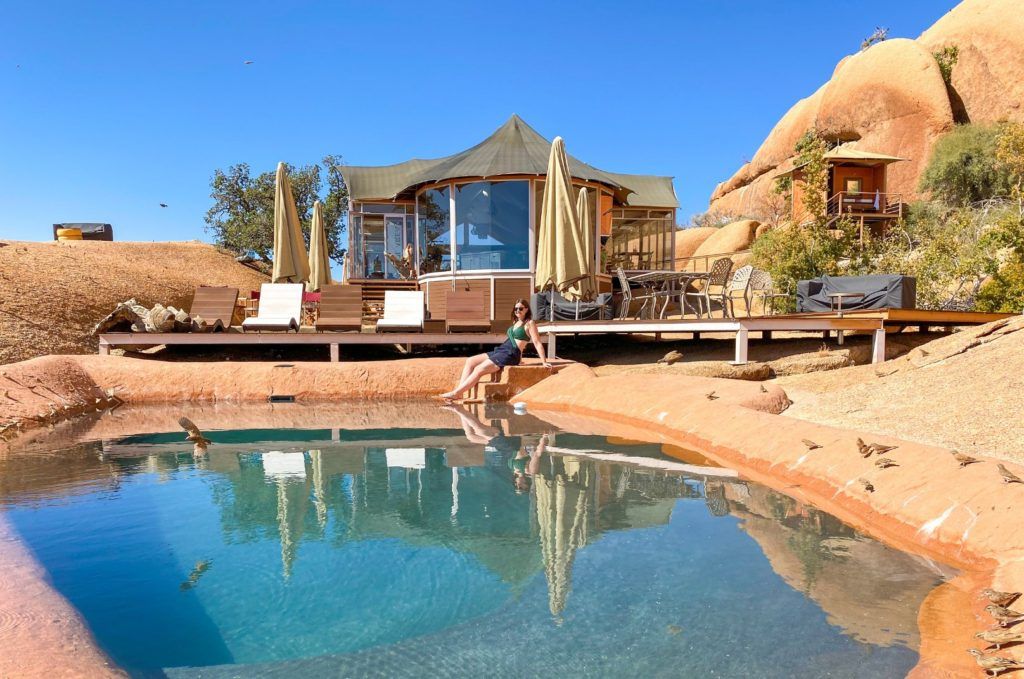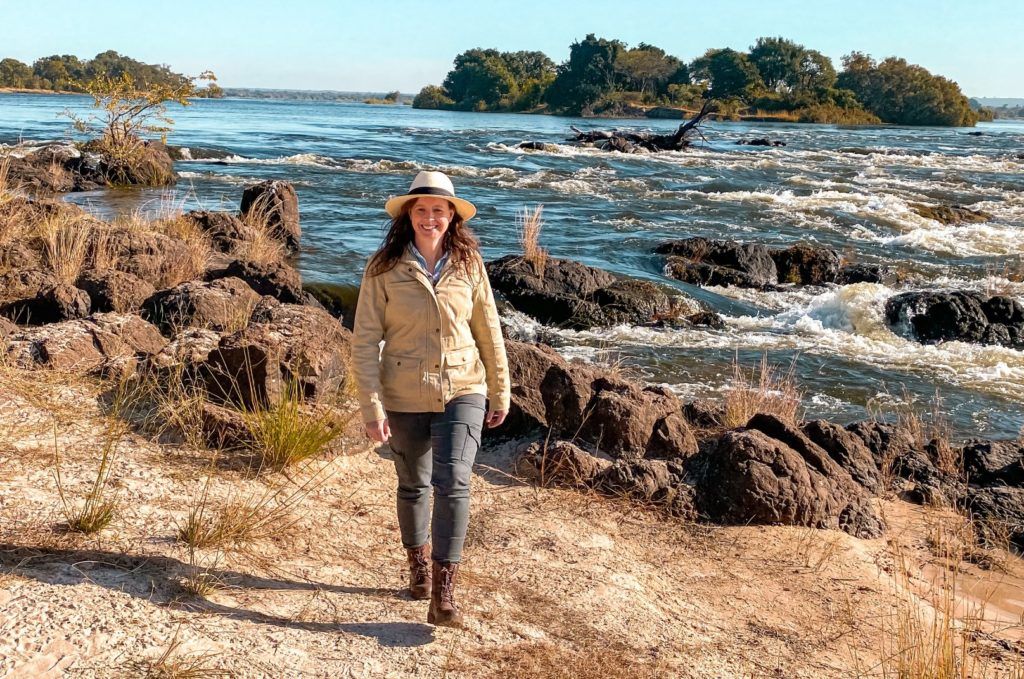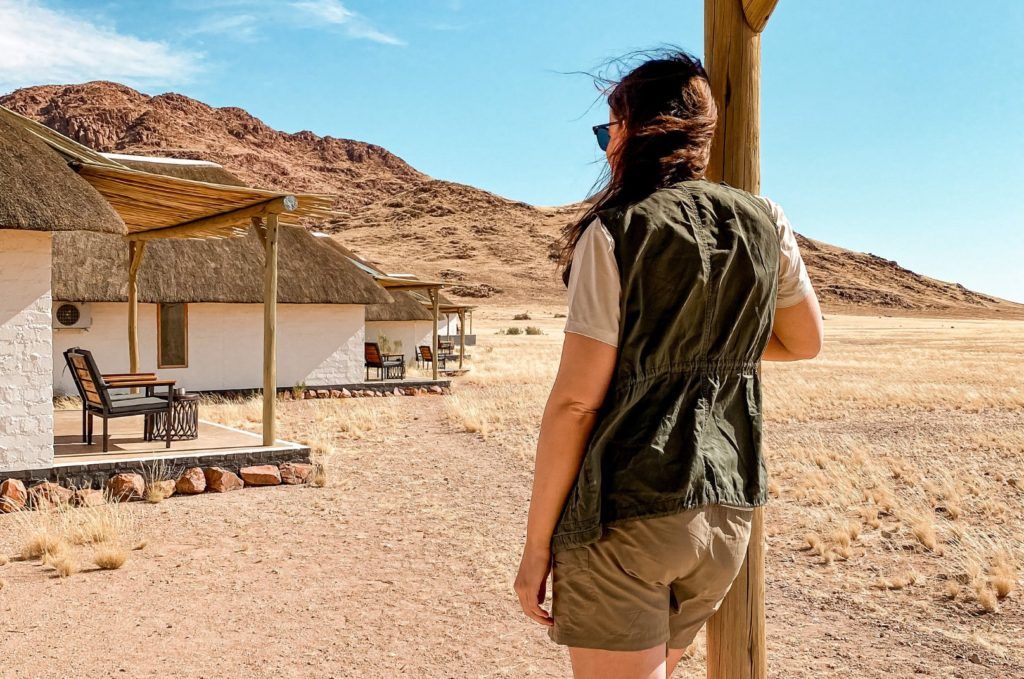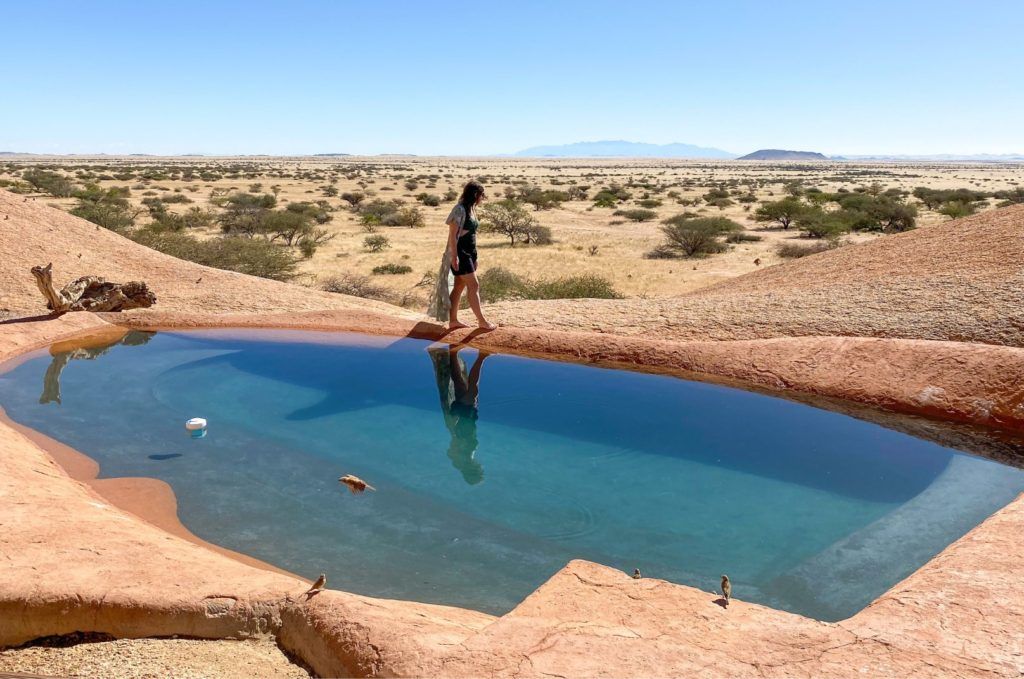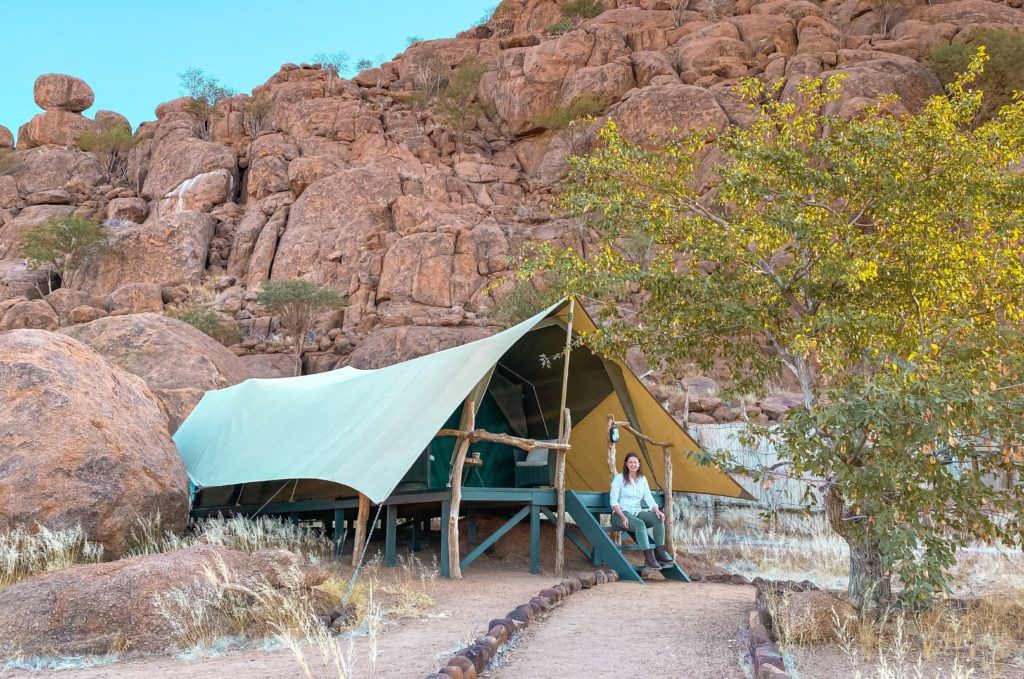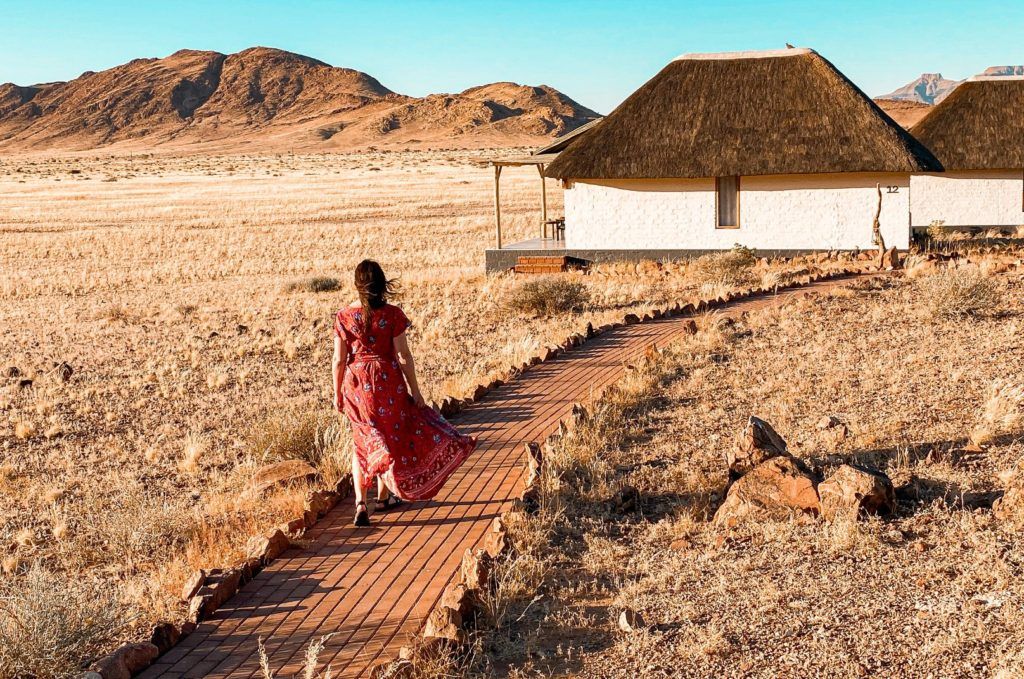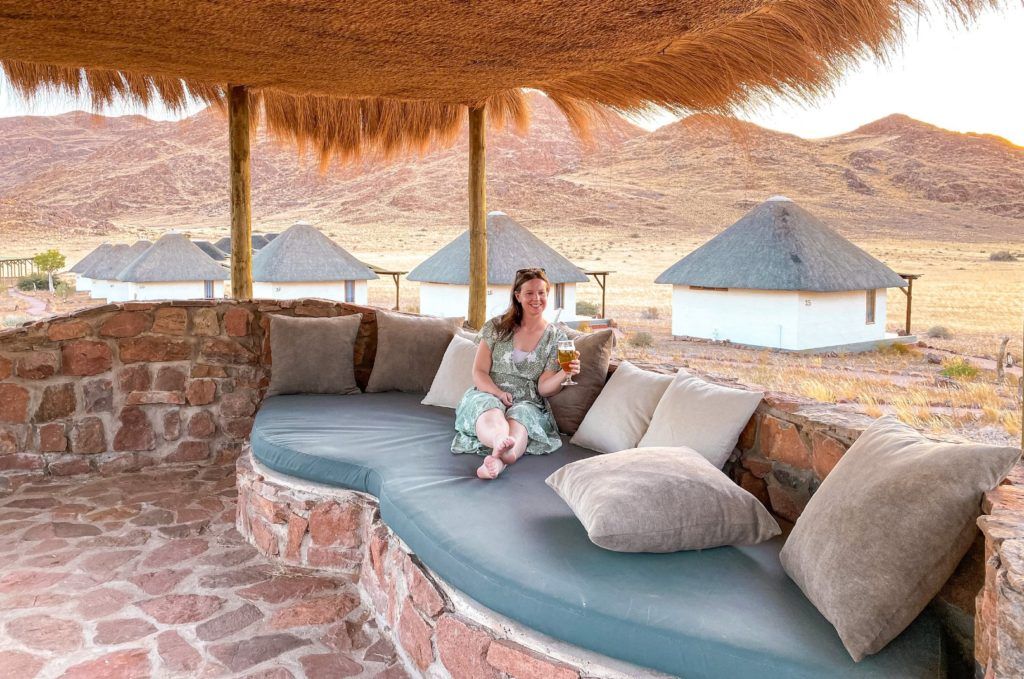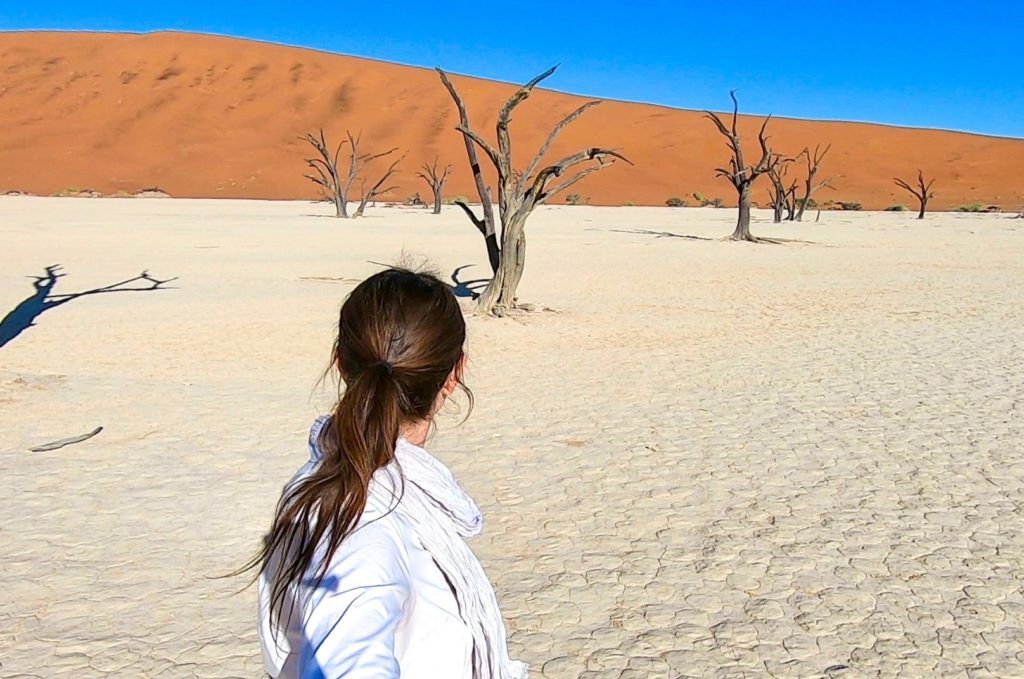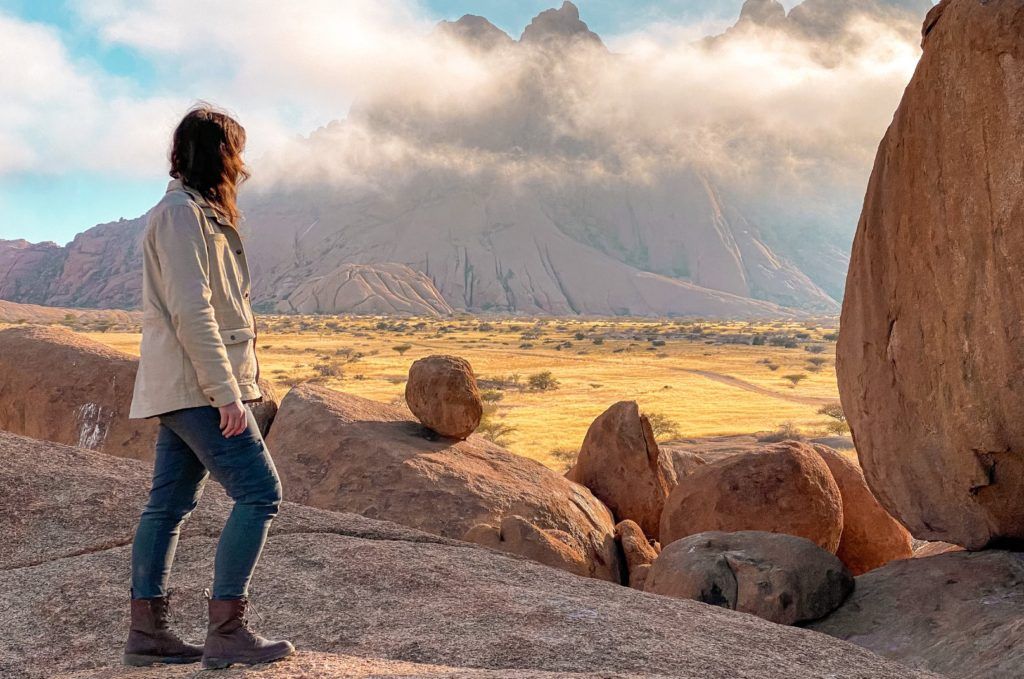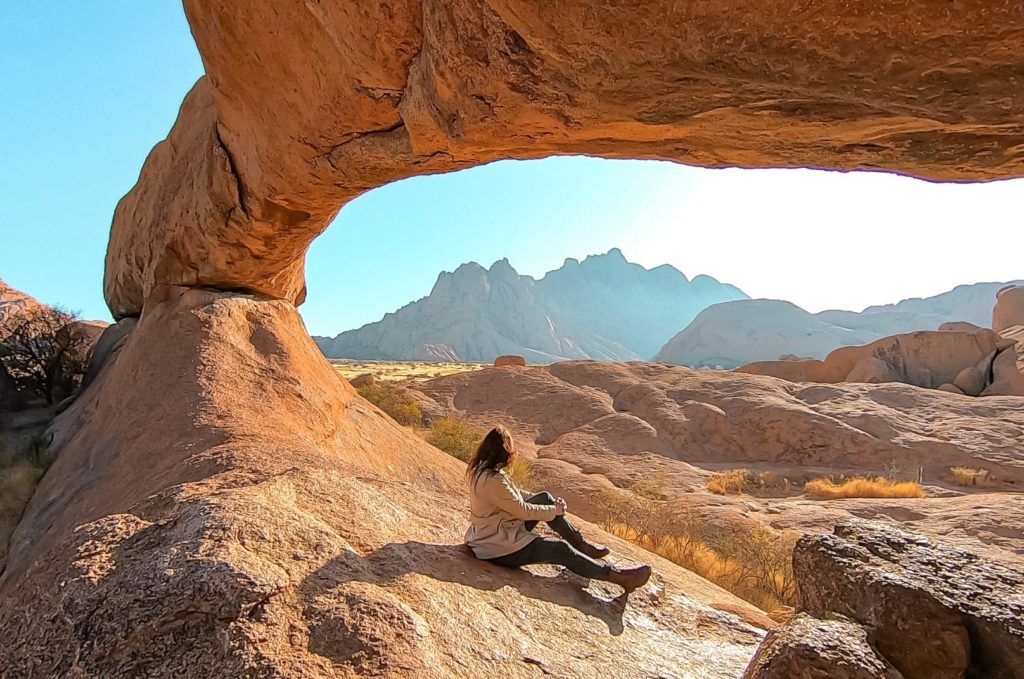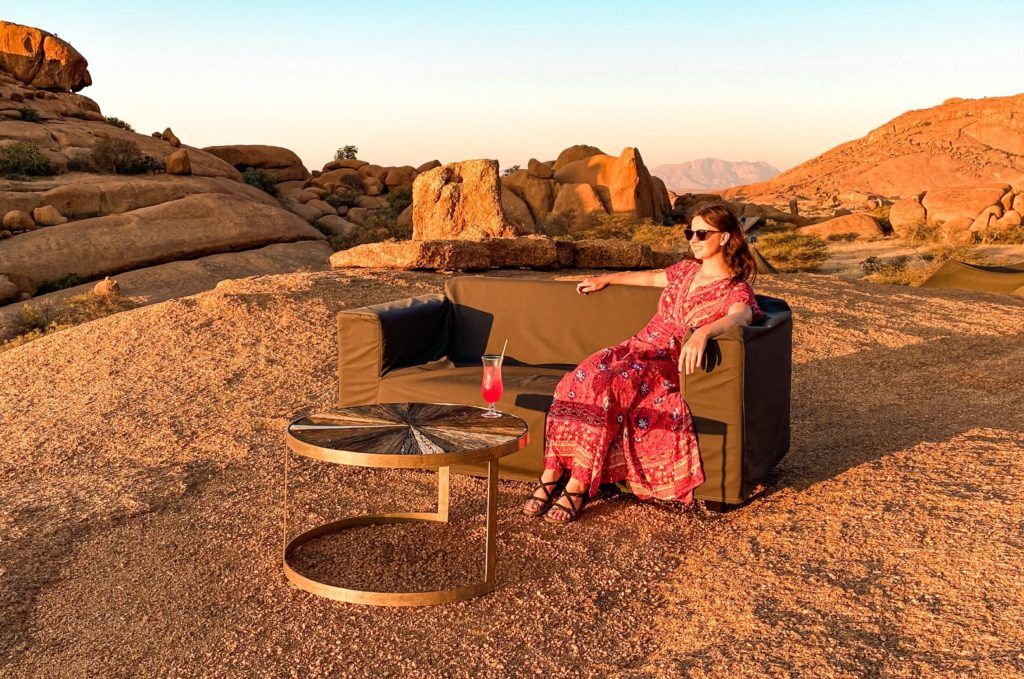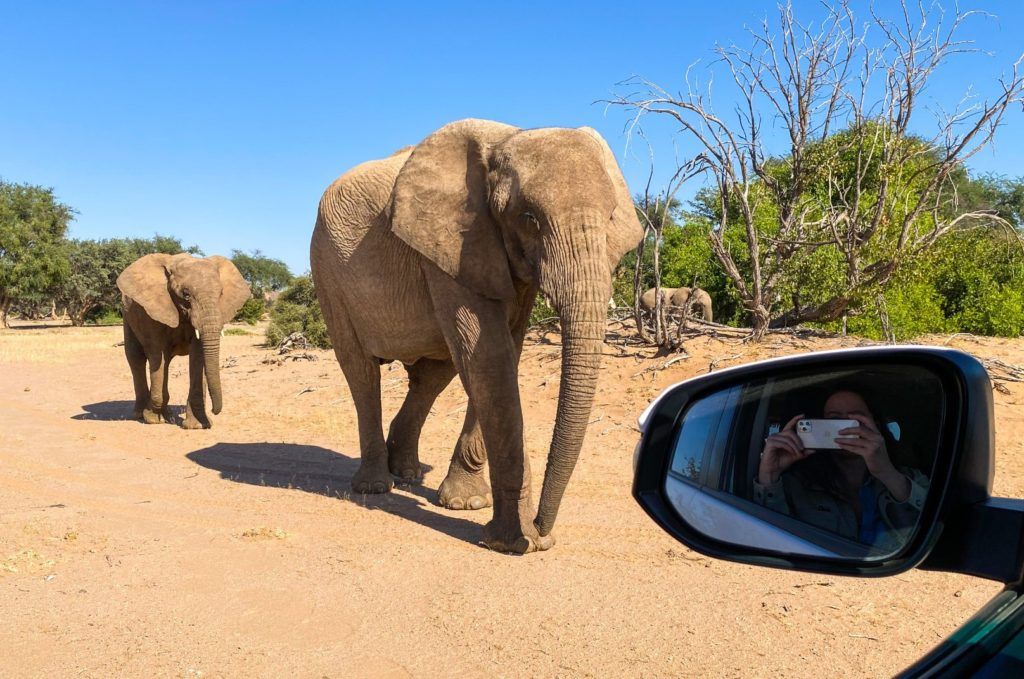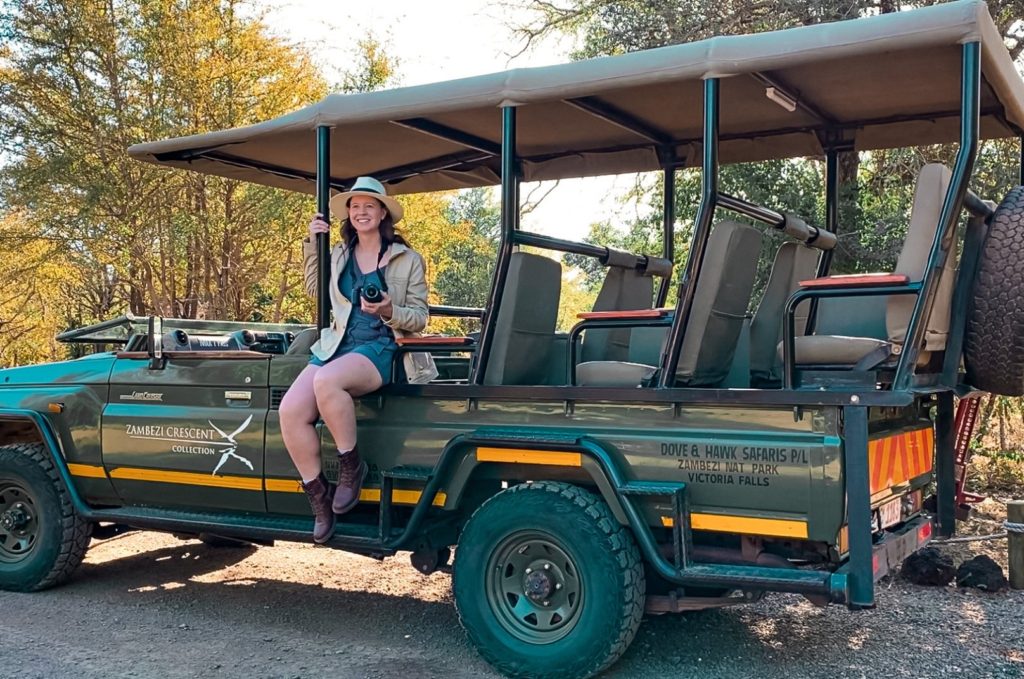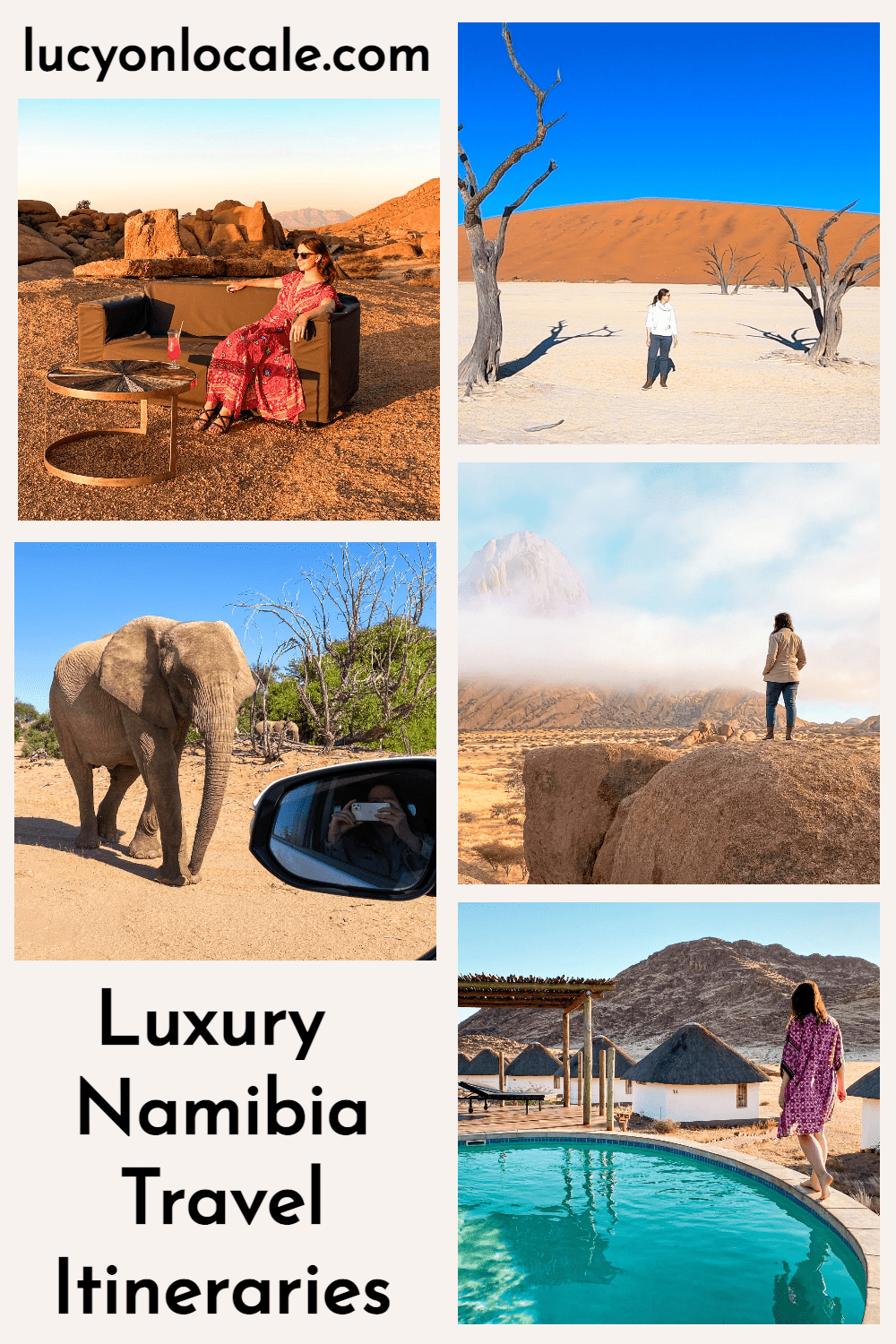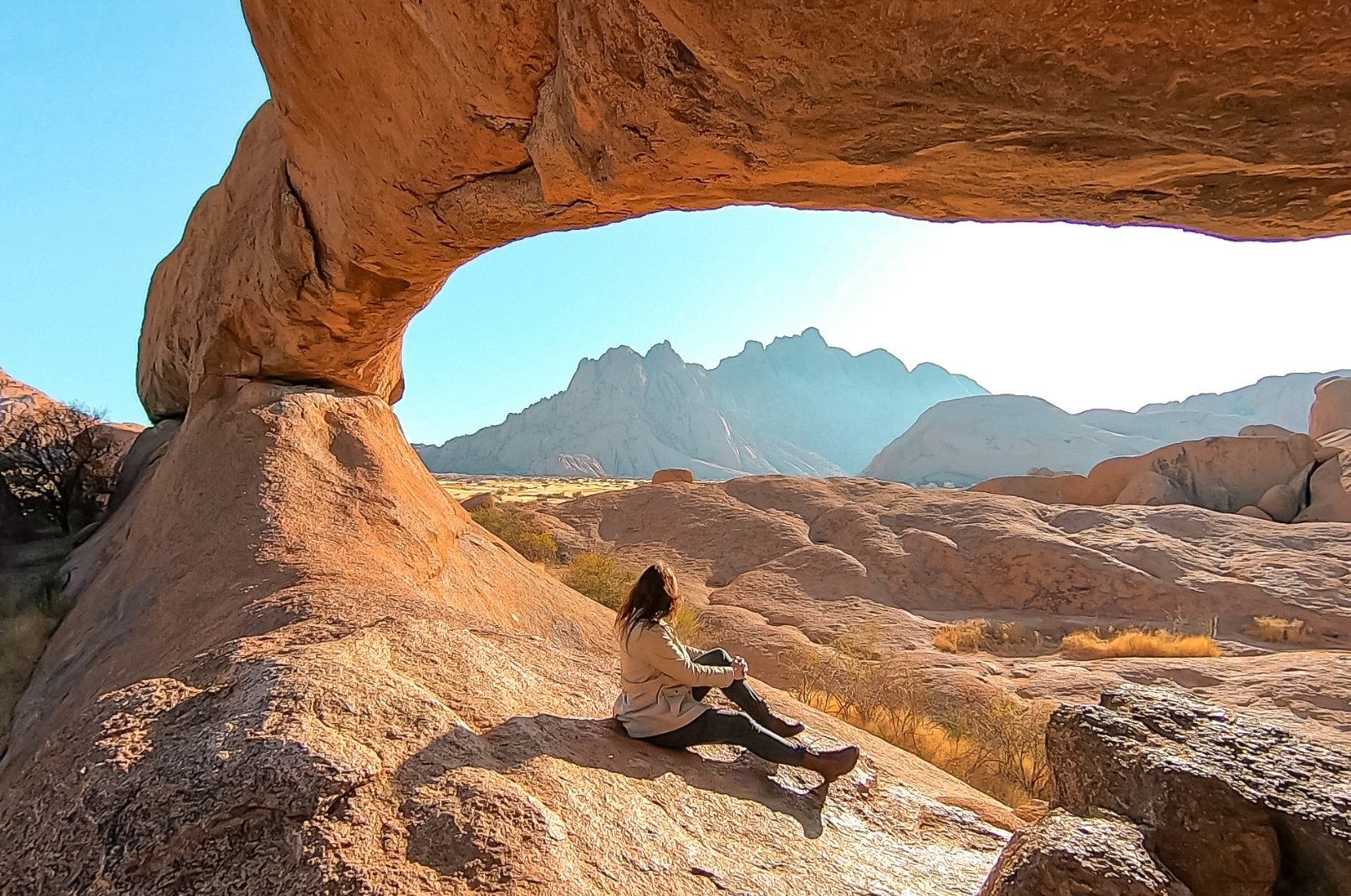
Namibia is one of the best safari destinations in the world! This remote, sparsely populated, otherworldly country also has some of the most spectacular landscapes on Earth. So here are luxury Namibia travel itineraries for various travel times and preferences!
The Ultimate Namibia Travel Guide
I’ve rounded up the best places to visit in Namibia. You’d probably need a month to see all the destinations on this list, so I’d prioritize Sossusvlei, Etosha National Park, Spitzkoppe, The Caprivi Strip, The Skeleton Coast, and Okonjima Nature Reserve.
Here are luxury Namibia travel itineraries to help you plan a trip!

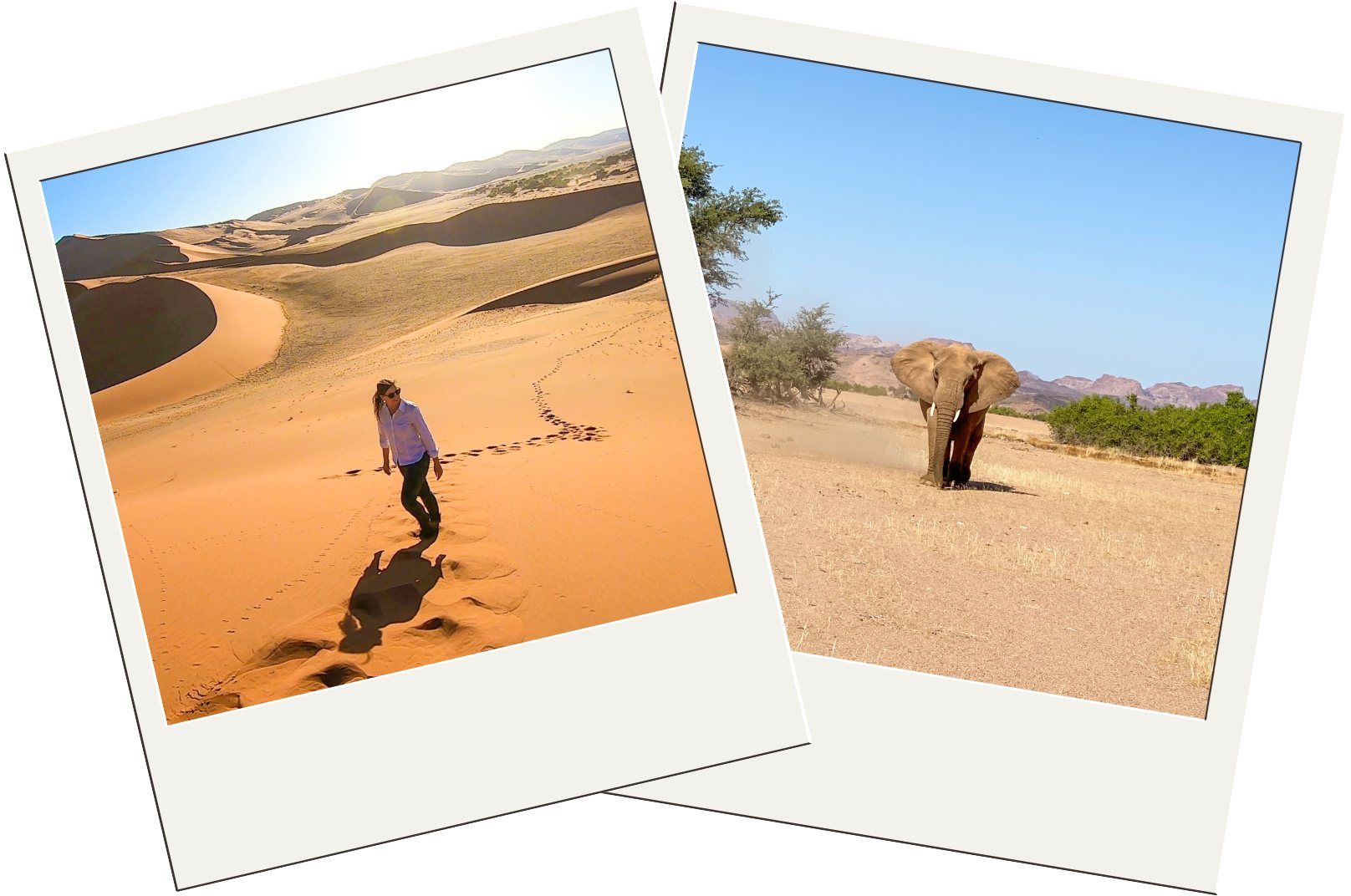
Know Before You Go
When I visited Namibia, I hired a private guide and driver, Eric, through Namibia Tours & Safaris. And this is one of the best travel investments I’ve ever made!
I had Eric one-on-one to myself for my entire two-week trip, so I got the most personalized, local, and authentic experience you can have in Namibia.
Eric knew people at every safari lodge we visited, so I got room upgrades, food credits, and priority activity bookings. Plus, I had a traveling companion who went above and beyond to ensure every trip detail exceeded my expectations.
I could’ve driven myself through Namibia, but having Eric drive gave me HUGE peace of mind. Plus, this allowed me to fully enjoy the vastness and beauty of Namibia’s landscapes.
Namibia Tours & Safaris also offers group and fly-in safaris to accommodate any budget. Or, if you want to do a self-drive safari (which Namibia is PERFECT for), I still recommend using Namibia Tours & Safaris to book your rental car and coordinate your lodging.
This way, if anything goes wrong at any point on your trip, you can always contact Namibia Tours & Safaris!

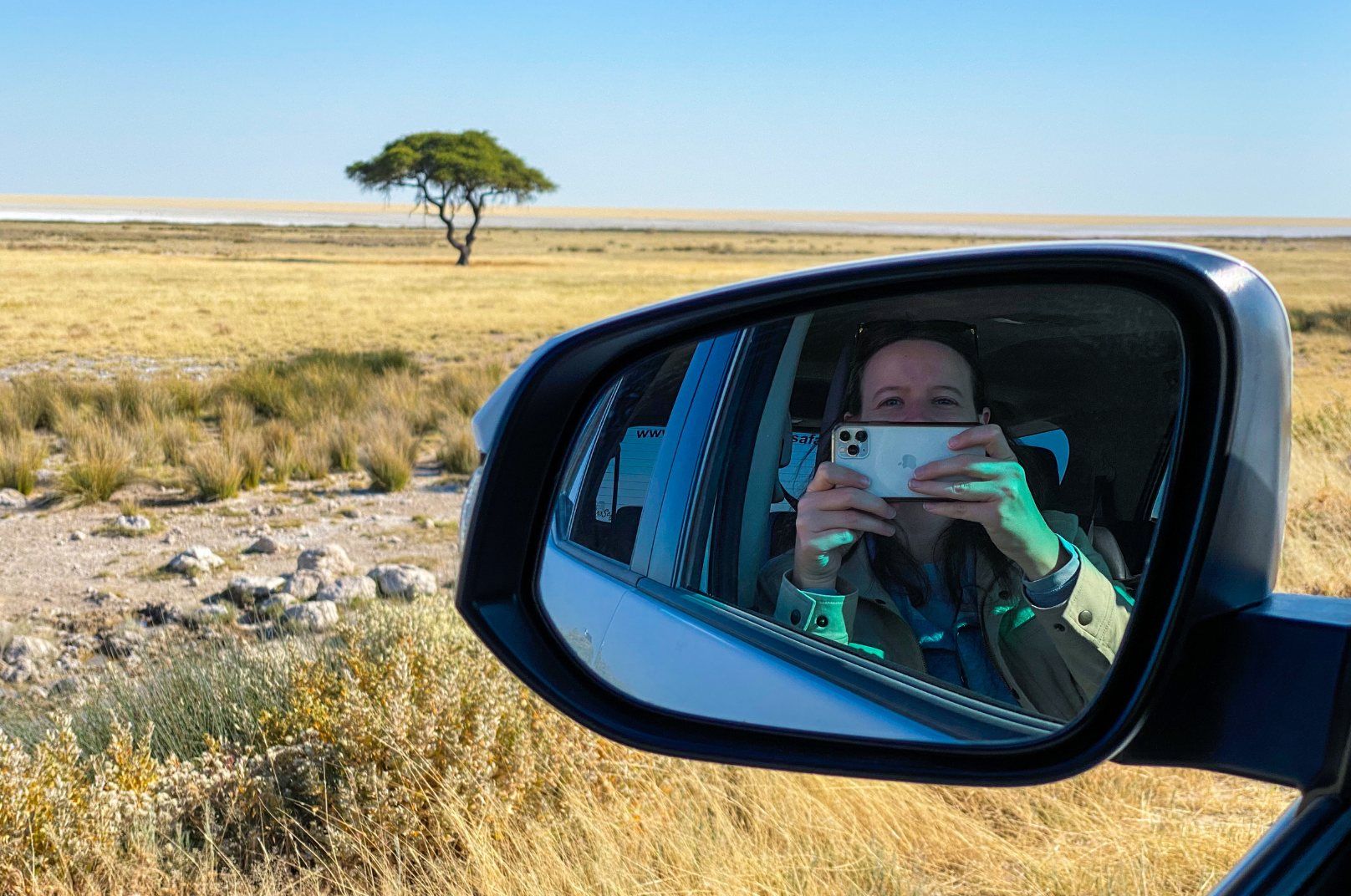
Getting Around Namibia
Namibia is a large country (about twice as big as California), so it takes several hours to drive between destinations. A road trip is the best way to see the country, but plan your itinerary to account for the long driving distances, so you have time to explore each place.
I lost count of how many people I met during my trip to Namibia who hadn’t built enough travel time in their itinerary. They didn’t leave themselves enough time at each stop to actually enjoy the activities, wildlife, and accommodations.
You can also do fly-in safaris, where you’ll take bush flights between destinations. This gets you from place to place faster, but it’s much more expensive than driving, and you won’t see as much of the country. If you want to visit the Skeleton Coast, a fly-in safari is your best bet, which you can combine with a driving safari to other places in Namibia.

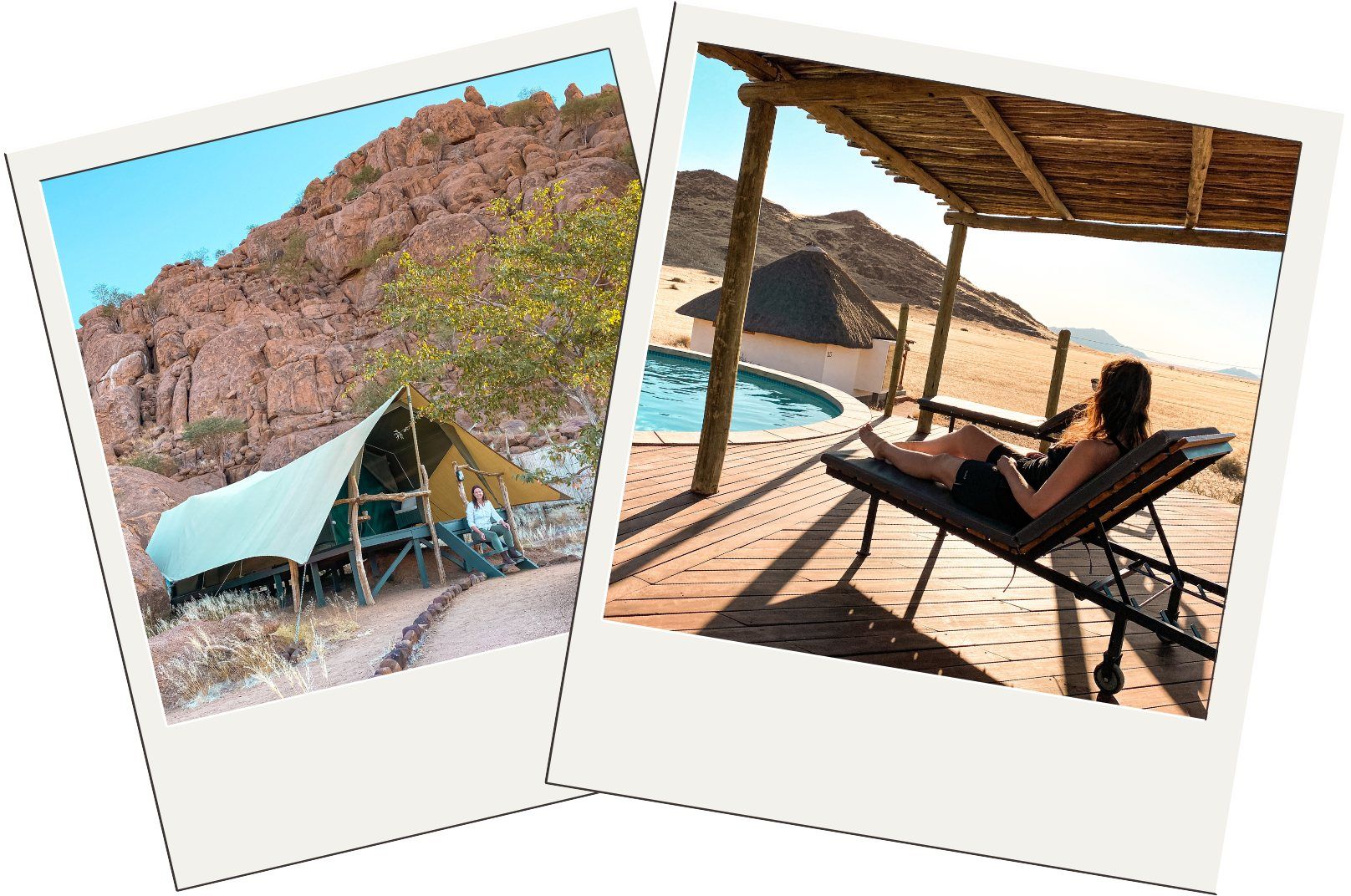
Where To Stay
Namibia has every type of lodging, from treehouses and glamping tents to luxury bungalows and rustic campsites. So I’ve rounded up the best lodges in Namibia.
If you want to camp along your route, I recommend booking campsites in advance because this is a VERY popular way to travel in Namibia, especially for locals.
While budget and location are important, there are more things you need to consider when selecting a safari camp. So read through my step-by-step guide to finding the perfect safari lodge for your trip.
Unlike hotels where you come and go, a safari lodge will be where you spend most of your time at each stop. Your accommodations will set the tone for your entire trip, so before you commit, do your due diligence!

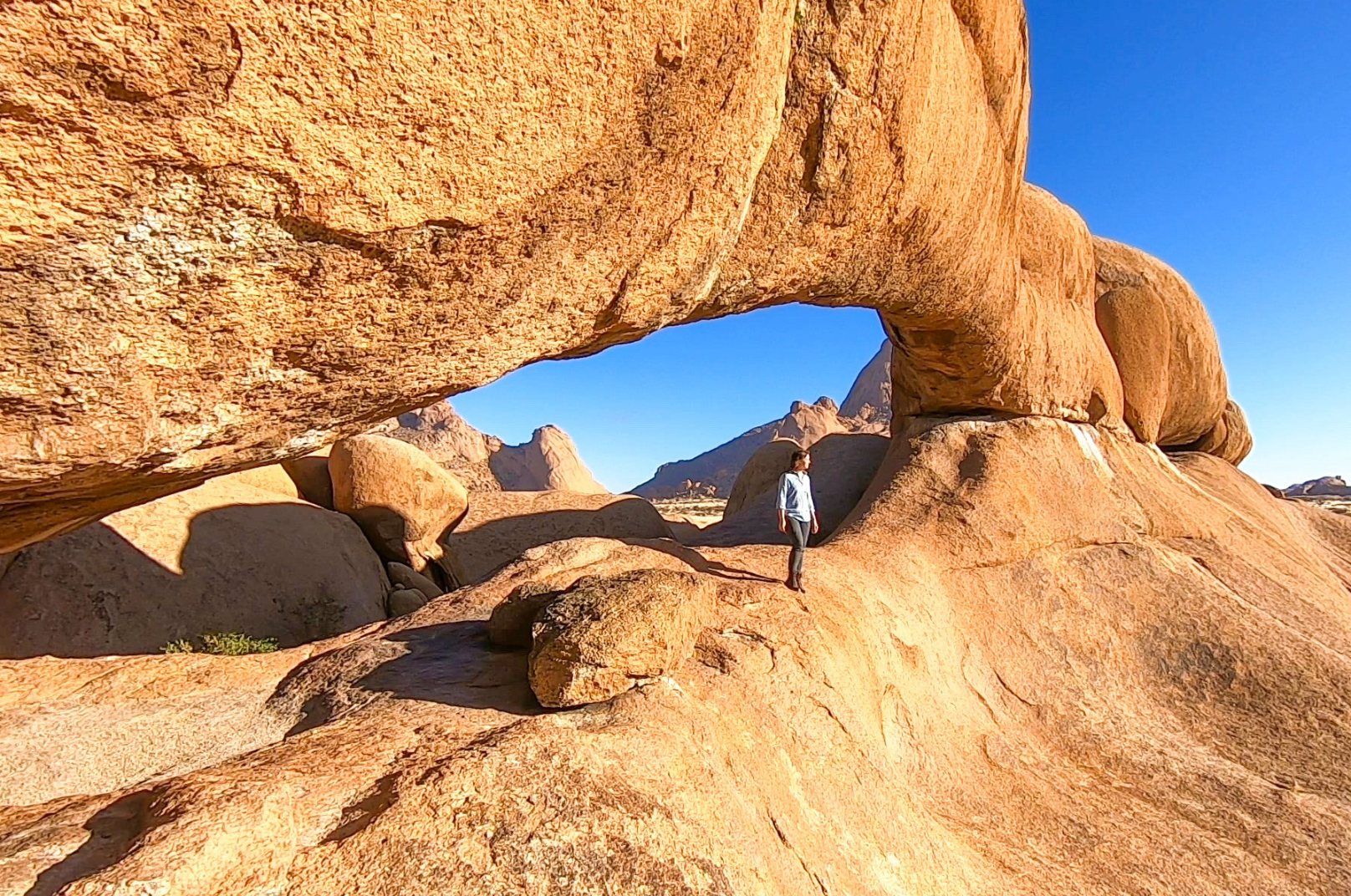
Recommended Itineraries
Recommended Itineraries
7 Days With a Focus on Wildlife
2 nights in Okonjima Nature Reserve
2 nights in Etosha National Park
2 nights in the Caprivi
7 Days With a Focus on Landscapes
2 nights in Sossusvlei
2 nights in Spitzkoppe
2 nights on the Skeleton Coast
7 Days With a Focus on Wildlife & Landscapes
2 nights in Sossusvlei
1 night in Spitzkoppe
1 night in Okonjima Nature Reserve
2 nights in Etosha National Park
10 Days With a Focus on Wildlife
2 nights in Sossusvlei
2 nights in Okonjima Nature Reserve
2 nights in Etosha National Park
3 nights in the Caprivi
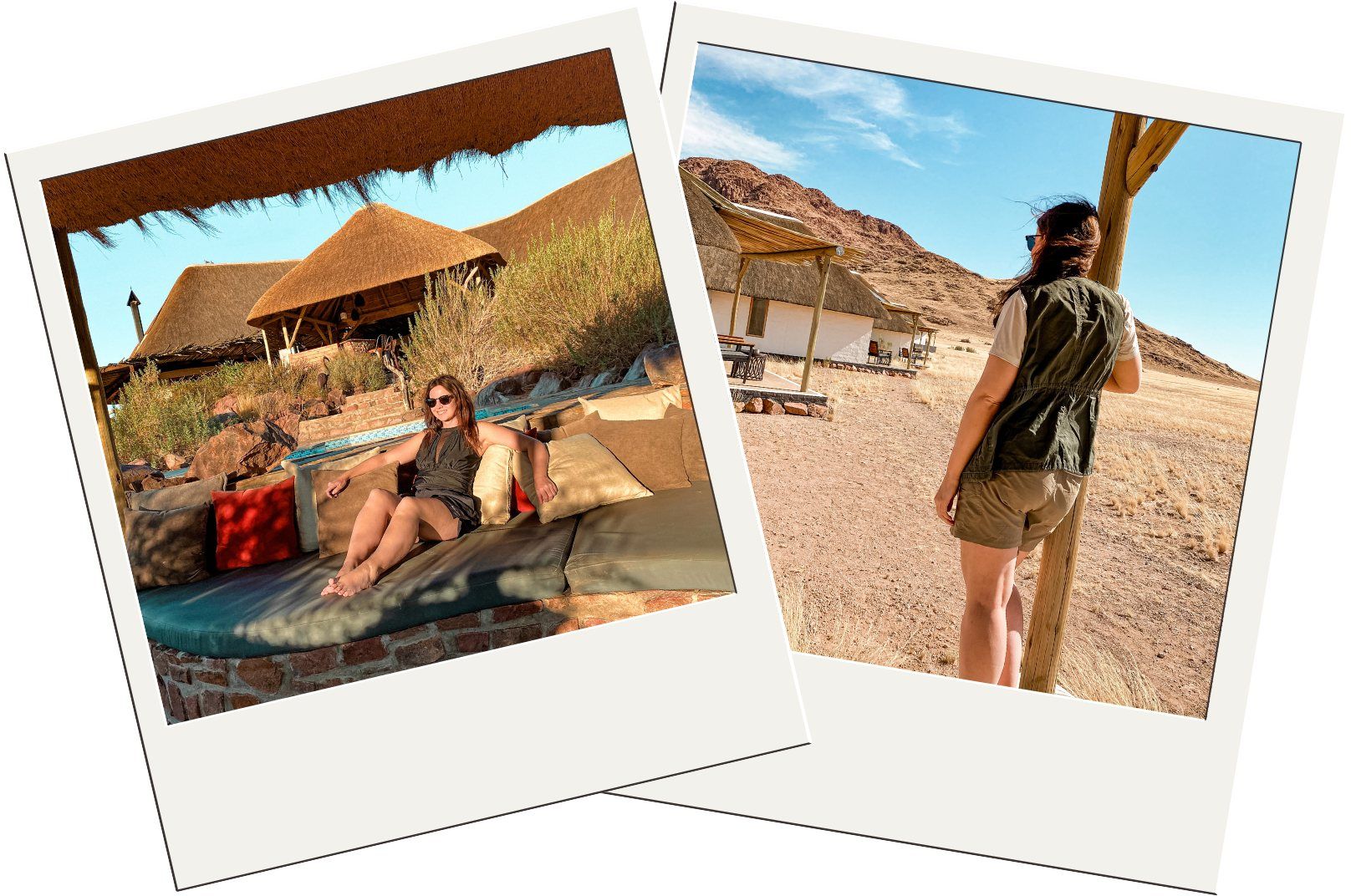
10 Days With a Focus on Landscapes
2 nights in Sossusvlei
1 night in Walvis Bay
2 nights in Spitzkoppe
2 nights in Twyfelfontein
2 nights on the Skeleton Coast
10 Days With a Focus on Wildlife & Landscapes
2 nights in Sossusvlei
1 night in Spitzkoppe
2 nights in Okonjima Nature Reserve
2 nights in Etosha National Park
2 nights on the Skeleton Coast
14 Days All-Desert
2 nights in Sossusvlei
1 night in Walvis Bay
2 nights in Spitzkoppe
1 night in Twyfelfontein
2 nights in Okonjima Nature Reserve
3 nights in Etosha National Park
2 nights on the Skeleton Coast
14 Days With Caprivi
2 nights in Sossusvlei
2 nights in Spitzkoppe
2 nights in Okonjima Nature Reserve
3 nights in Etosha National Park
2 nights on the Skeleton Coast
2 nights in the Caprivi
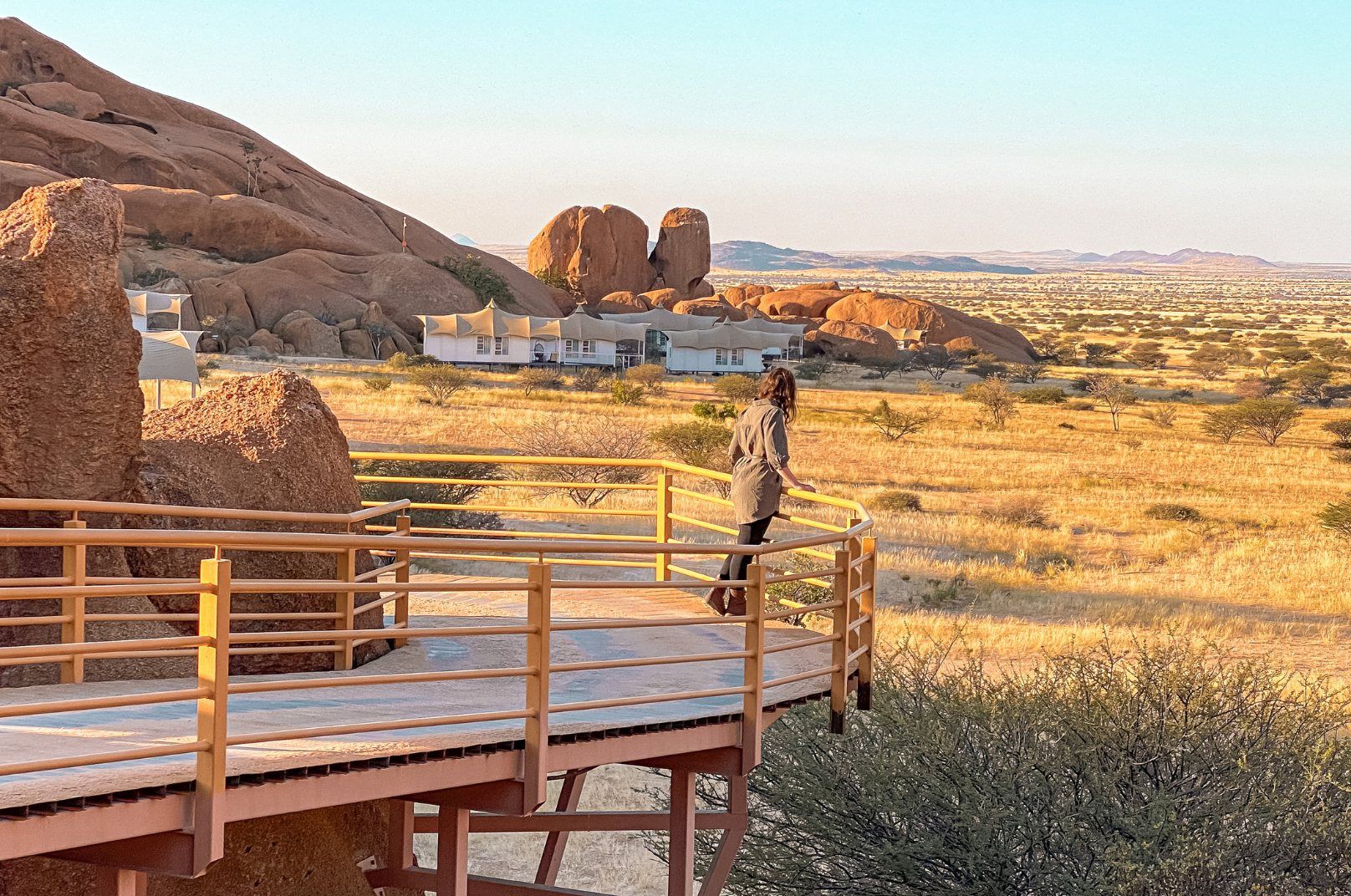
21 Days
2 nights at Fish River Canyon
2 nights in Sossusvlei
1 night in Walvis Bay
2 nights in Spitzkoppe
2 nights in Twyfelfontein
2 nights in Okonjima Nature Reserve
4 nights in Etosha National Park (2 nights on the western side and two nights on the eastern side)
2 nights on the Skeleton Coast
3 nights in the Caprivi

Shop My Safari Essentials

Will one of these luxury Namibia travel itineraries work for you? Share with us in the comments!

For Planning The Rest Of Your Namibia Trip

Recommended Tours in Namibia

Frequently Asked Questions
Can you travel Namibia alone?
Yes! I felt very safe during my solo trip to Namibia, but as with any destination, you must take precautions to keep yourself safe. Don’t walk alone at night. Stay in a secure and well-located hotel or safari lodge. Use slash-proof, lockable, and RFID-protected bags and purses, and always have a charged cell phone.
Namibia Solo Travel Tips:
Don’t post on social media in real time. Most social posts have geotagging enabled which would let anyone know where you are. So, snap your amazing photos and post them when you’ve left the place where you took them.
Always keep your phone charged. You never want to be concerned about a low battery. I always kept a car and portable charger with me, and I charged my phone every chance I got.
The emergency number in Namibia is 999.
Always be able to access essential documents – passport, health insurance policy, accommodation addresses, etc. I keep digital copies of all crucial documents on my phone and computer, and I keep printed copies in the inner pocket of my purse, backpack, or bag.
Try to arrive at your destination during the day. Arriving during the day will make you feel more comfortable, less nervous, and less rushed. Plus, getting to your destination during the day means you won’t have to drive at night, which isn’t ideal in Namibia because of road conditions and wildlife.
Trust your instincts. If you don’t feel comfortable, remove yourself from a situation, even if it means losing money or being rude. Don’t be polite at the cost of your safety. And don’t value lost money over your safety.
Is Namibia good for tourists?
Yes!
Namibia is home to deserts, mountains, incredible safari lodges, national parks, dreamy beach towns, and some of the best wildlife viewing in Sub-Saharan Africa. So whether you’re climbing sand dunes in Sossusvlei or tracking rhinos in Etosha National Park, this Namibia luxury safari guide has everything you need to plan an epic trip!
Fun Fact: Namibia has one of the lowest population densities in the world, which means this is one of the best destinations to escape the crowds.
When To Go:
Namibia is a desert country – one of the driest places in Sub-Saharan Africa. July – October are the driest months of the year and the peak travel season. Wildlife will gather by the hundreds around water holes, meaning these months have some of the best game viewings anywhere in Africa. These months have the highest prices and crowds, so book your lodge and tours as far in advance as possible. In July and August, daytime temperatures average in the 60s and 70s, and nighttime temperatures can drop below freezing, so bring layers. September and October nights are warmer, but you’ll still want a jacket.
May and June are the shoulder months. The rains will have stopped, the landscape will be lush, and wildlife will be easily visible at waterholes (though not as high a concentration as in July – October). Travel costs will be less during these months, and the safari lodges and destinations won’t be overrun with tourists. Daytime temperatures range from the 60s to 80s, with nighttime temperatures falling below freezing in June, so bring layers for the mornings and evenings.
November, February, and March are the rainy and off-season months. It will be wet and humid, and wildlife will be hard to see because they won’t need to gather at watering holes. You can score some great accommodation deals during these months, though, and it can feel like you have the entire country to yourself.
December, January, and April are the best months for bird watching. These are the months directly after the rainy months, when the weather will be drier, the skies clearer, and the feeding conditions are ideal for water birds. These months have drastic temperature changes from night to day, so bring shorts, pants, short-sleeve shirts, and jackets.
Is it OK to go on vacation by yourself?
Yes! I felt very safe during my solo trip to Namibia, but as with any destination, you must take precautions to keep yourself safe. Don’t walk alone at night. Stay in a secure and well-located hotel or safari lodge. Use slash-proof, lockable, and RFID-protected bags and purses, and always have a charged cell phone.
Namibia is home to deserts, mountains, incredible safari lodges, national parks, dreamy beach towns, and some of the best wildlife viewing in Sub-Saharan Africa. So here are more most-visit places in Namibia:
1.Sossusvlei
2. The Caprivi Strip
3. Spitzkoppe
4. Epupa Falls
5. Okonjima Nature Reserve
6. Twyfelfontein
7. Swakopmund
8. Walvis Bay
9. Skeleton Coast
10. Etosha National Park
Is Namibia safe for solo female travellers?
Yes! I felt very safe during my solo trip to Namibia, but as with any destination, you must take precautions to keep yourself safe. Don’t walk alone at night. Stay in a secure and well-located hotel or safari lodge. Use slash-proof, lockable, and RFID-protected bags and purses, and always have a charged cell phone.
Namibia Solo Travel Tips:
Don’t post on social media in real time. Most social posts have geotagging enabled which would let anyone know where you are. So, snap your amazing photos and post them when you’ve left the place where you took them.
Always keep your phone charged. You never want to be concerned about a low battery. I always kept a car and portable charger with me, and I charged my phone every chance I got.
The emergency number in Namibia is 999.
Always be able to access essential documents – passport, health insurance policy, accommodation addresses, etc. I keep digital copies of all crucial documents on my phone and computer, and I keep printed copies in the inner pocket of my purse, backpack, or bag.
Try to arrive at your destination during the day. Arriving during the day will make you feel more comfortable, less nervous, and less rushed. Plus, getting to your destination during the day means you won’t have to drive at night, which isn’t ideal in Namibia because of road conditions and wildlife.
Trust your instincts. If you don’t feel comfortable, remove yourself from a situation, even if it means losing money or being rude. Don’t be polite at the cost of your safety. And don’t value lost money over your safety.
Can I speak English in Namibia?
Yes. English is the official language in Namibia. Almost everyone you encounter on your trip will speak English, though German and Afrikaans are also widely spoken.
Etosha National Park is the top place to visit in Namibia. Namibia is home to deserts, mountains, incredible safari lodges, national parks, dreamy beach towns, and some of the best wildlife viewing in Sub-Saharan Africa. So here are more most-visit places in Namibia:
1.Sossusvlei
2. The Caprivi Strip
3. Spitzkoppe
4. Epupa Falls
5. Okonjima Nature Reserve
6. Twyfelfontein
7. Swakopmund
8. Walvis Bay
9. Skeleton Coast
Is it cheap to visit Namibia?
Yes. Relatively speaking, Namibia is one of the most budget-friendly safari destinations in Africa.
When To Go:
Namibia is a desert country – one of the driest places in Sub-Saharan Africa. July – October are the driest months of the year and the peak travel season. Wildlife will gather by the hundreds around water holes, meaning these months have some of the best game viewings anywhere in Africa. These months have the highest prices and crowds, so book your lodge and tours as far in advance as possible. In July and August, daytime temperatures average in the 60s and 70s, and nighttime temperatures can drop below freezing, so bring layers. September and October nights are warmer, but you’ll still want a jacket.
May and June are the shoulder months. The rains will have stopped, the landscape will be lush, and wildlife will be easily visible at waterholes (though not as high a concentration as in July – October). Travel costs will be less during these months, and the safari lodges and destinations won’t be overrun with tourists. Daytime temperatures range from the 60s to 80s, with nighttime temperatures falling below freezing in June, so bring layers for the mornings and evenings.
November, February, and March are the rainy and off-season months. It will be wet and humid, and wildlife will be hard to see because they won’t need to gather at watering holes. You can score some great accommodation deals during these months, though, and it can feel like you have the entire country to yourself.
December, January, and April are the best months for bird watching. These are the months directly after the rainy months, when the weather will be drier, the skies clearer, and the feeding conditions are ideal for water birds. These months have drastic temperature changes from night to day, so bring shorts, pants, short-sleeve shirts, and jackets.
How many days is enough in Namibia?
If you only have a week in Namibia, I recommend spending two nights in Sossusvlei, two nights in Spitzkoppe, and three nights in Etosha National Park.
If you have two weeks, add two nights a Okonjima Nature Reserve, two nights in Twyfelfontein, one night in Swakopmund and Walvis Bay, and two nights in the Skeleton Coast.
If you have three weeks, add The Caprivi Strip.
What is the best month to visit Namibia?
Namibia is a desert country – one of the driest places in Sub-Saharan Africa. July – October are the driest months of the year and the peak travel season. Wildlife will gather by the hundreds around water holes, meaning these months have some of the best game viewings anywhere in Africa. These months have the highest prices and crowds, so book your lodge and tours as far in advance as possible. In July and August, daytime temperatures average in the 60s and 70s, and nighttime temperatures can drop below freezing, so bring layers. September and October nights are warmer, but you’ll still want a jacket.
May and June are the shoulder months. The rains will have stopped, the landscape will be lush, and wildlife will be easily visible at waterholes (though not as high a concentration as in July – October). Travel costs will be less during these months, and the safari lodges and destinations won’t be overrun with tourists. Daytime temperatures range from the 60s to 80s, with nighttime temperatures falling below freezing in June, so bring layers for the mornings and evenings.
November, February, and March are the rainy and off-season months. It will be wet and humid, and wildlife will be hard to see because they won’t need to gather at watering holes. You can score some great accommodation deals during these months, though, and it can feel like you have the entire country to yourself.
December, January, and April are the best months for bird watching. These are the months directly after the rainy months, when the weather will be drier, the skies clearer, and the feeding conditions are ideal for water birds. These months have drastic temperature changes from night to day, so bring shorts, pants, short-sleeve shirts, and jackets.

This article about luxury Namibia travel itineraries is not a sponsored post, and the thoughts and opinions expressed in this post about luxury Namibia travel itineraries are entirely my own. Some of the links in this post about luxury Namibia travel itineraries are affiliate links, and, at no cost to you, I may earn a small commission from this article about luxury Namibia travel itineraries.
 Travel Shop
Travel Shop Merch
Merch Travel Tips
Travel Tips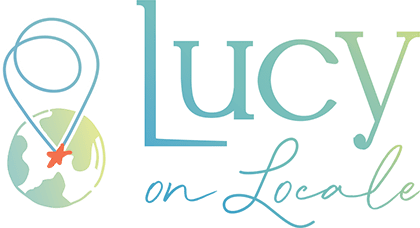
 Photography
Photography Points & Miles
Points & Miles Credit Cards
Credit Cards